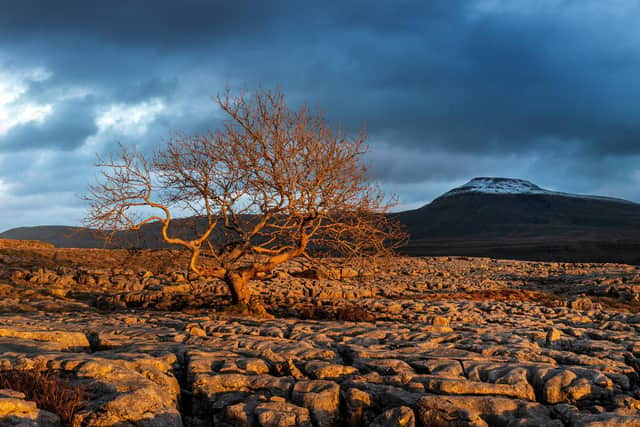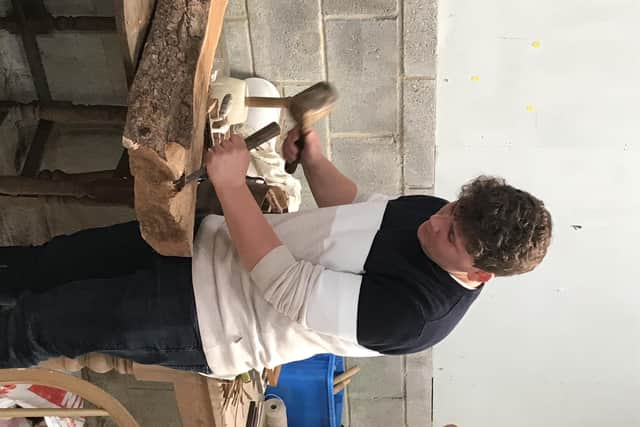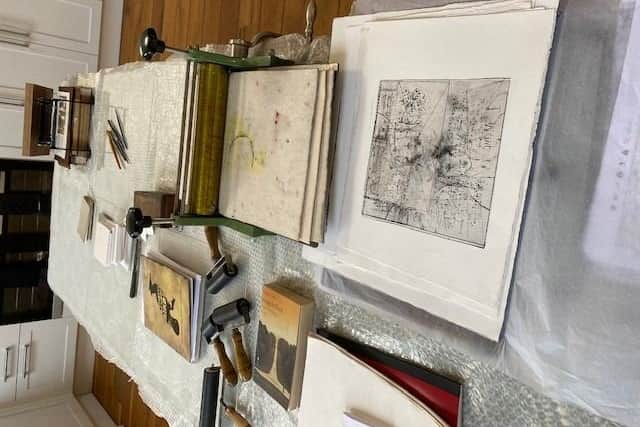Climate change: Yorkshire Dales youngsters raise awareness with All Our Land exhibition at the The Folly Museum and Gallery in Settle
Yet appearances can be deceptive. Work is already under way to reverse environmental damage to Ingleborough, demonstrating that the climate crisis and loss of biodiversity pose threats to this part of the Dales, just as they do to countries on the other side of the world.
Raising awareness of the dangers on our own doorsteps, and starting conversations about tackling the climate emergency, are at the heart of a thought-provoking exhibition in Settle created by young people from the Dales, who have concentrated on their local area to highlight a global issue.
Advertisement
Hide AdAdvertisement
Hide AdAll Our Land showcases artwork produced by more than 20 students aged between 14 and their mid-20s. Most are from Queen Elizabeth School, in Kirby Lonsdale, and others are from the Dales but away studying at universities.


They were inspired by monthly field trips to Ingleborough during which they worked with artists, environment scientists and a farmer.
Their work includes some striking exhibits, among them a clay head without a mouth to represent populations whose voices are not being heard in the debate over how to tackle climate change, and a pair of tiny feet that express the need to get down amongst the grasses and plants in order to notice changes to the environment.
The project has been running since last year, with funding from Natural England and the Yorkshire Wildlife Trust. The Yorkshire Dales Millennium Trust (YDMT) and artists Philippa Troutman and Tony Stephenson have worked with the students in producing the exhibition.
Advertisement
Hide AdAdvertisement
Hide AdYDMT All Our Land project officer Anthea Hanson said: “The idea was to join science, art and conversation, with the end product being an exhibition. We wanted it to be youth led, but you don’t know really where it’s going to go and you try not to lead or put words into their mouths.


“We did sessions at school, which were very much about exploring how they felt about the climate crisis and the environment, and interestingly that very quickly went global. It was very hard to pin it down to the local because what they were really interested in was the global issues, and you can’t separate the two.
“There was a lot of strong feeling about it, and quite a lot of anxiety about it, so we realised very quickly we needed to balance the anxiety with the feeling that you can actually make a difference.”
One of the people who worked with the students was farmer Tom Lord, of Lower Winskill Farm at Langcliffe. Anthea said: “There was a lot of feeling of hope, and one of the comments he made at the end was, ‘It’s a bit like a sickly lamb. If you hold it and you care for it and you act straight away, you can cure it’, which was a nice analogy.”
Advertisement
Hide AdAdvertisement
Hide AdThe students had weekend sessions at Broadrake, a bunk barn in Chapel-le-Dale, at the foot of Whernside, where wildflower meadows and limestone pavements create a characteristically Dales environment.


Anthea said that sparked off a lot of discussion about climate: “It involved feelings about place, about the historic impact we’ve had on the environment both good and bad.
“One of the things that came out of that was that one girl made a clay face without a mouth, and it kind of evolved, and she said it’s representing all those people who don’t have a voice in the discussion about the environment, from the indigenous people of Brazil to people in the UK.
“They were quite clued up on the climate crisis, and saying, ‘I know about this, but do the adults?’ They were frustrated at lack of progress, frustrated at language, about what words were being used. ‘Crisis’ and ‘breakdown’ were words that should be used instead of ‘climate change’ to show that it’s immediate and the importance of it, rather than something that sounds passive.”
Advertisement
Hide AdAdvertisement
Hide AdThe desire to do something positive to help the environment is what taking part in All Our Land has left with those involved. Fin Scott, 17, created a wood carving for the exhibition, which he entitled Finding the Lines Within. He hopes all the artwork will inspire visitors to make a difference for the better.
“Whatever you can do, do it,” he said: “However insignificant it may seem, or however small, everybody’s efforts add up and can make a huge difference.”
Being in the landscape brought home the impact of climate change for Fin. “It was a beautiful place where you could take a walk around, admire the land and it was inspiring. Just getting out and seeing the impact of the restoration work that has been done gives you first-hand experience of what’s going on.
“People are aware of the climate crisis, but they don’t really see it happening and what was great about this project is it got loads of people from different backgrounds to talk about their experiences of what climate change is to them.
Advertisement
Hide AdAdvertisement
Hide Ad“All you really hear on the news is how it’s all negative, it’s all bad, but then the project gave you a view of the good side, like at Lower Winskill Farm, where the farmer is doing really great work to restore wildflower meadows, and it shows that you’ve got to get out and do something about it.”
All Our Land is at the The Folly Museum and Gallery in Settle until December 23. Exhibits include paintings, lino-cuts, poetry, sculpture and woodcarving. Further details at https://thefolly.org.uk/event/all-our-land/